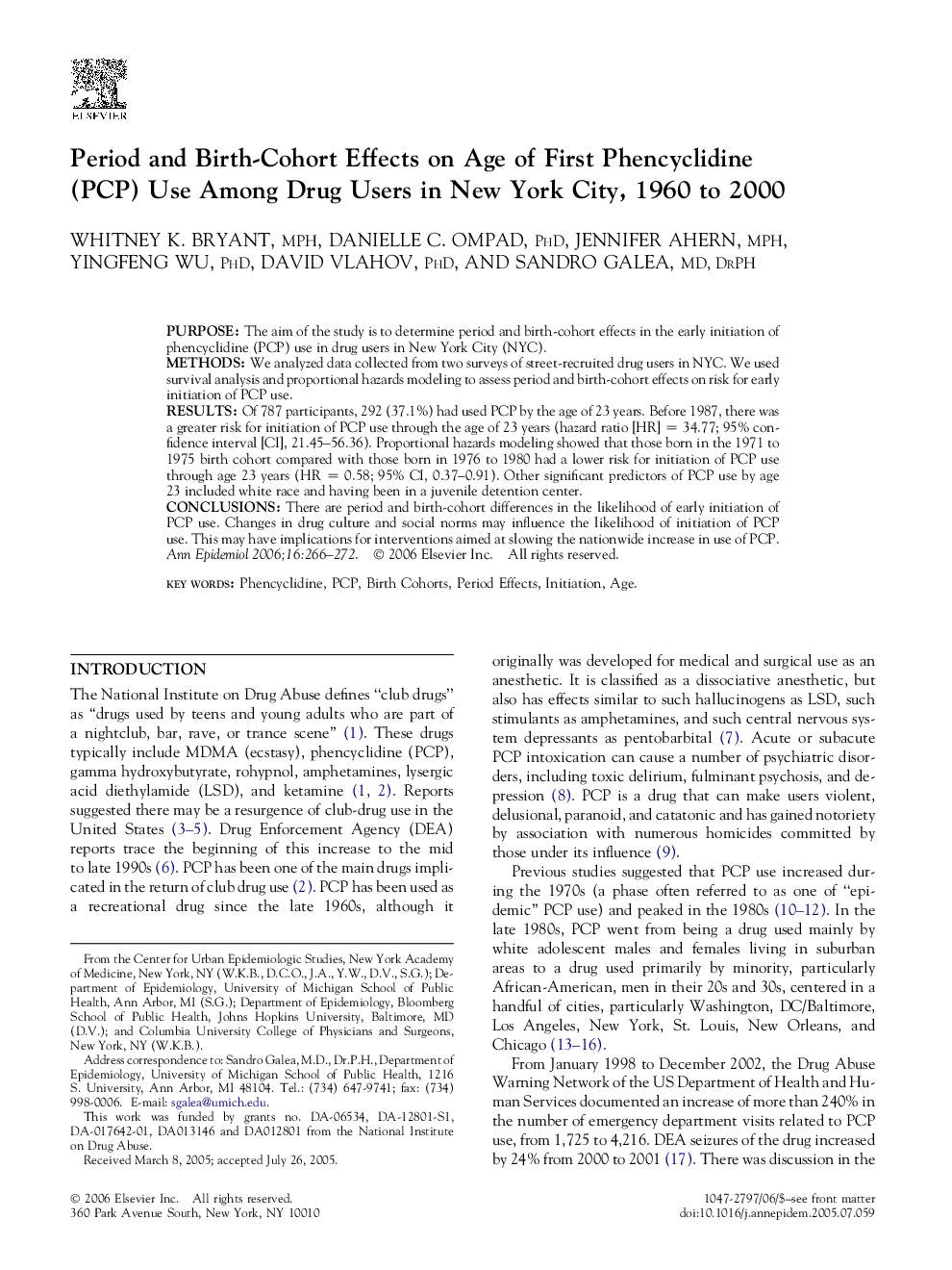| Article ID | Journal | Published Year | Pages | File Type |
|---|---|---|---|---|
| 3445908 | Annals of Epidemiology | 2006 | 7 Pages |
PurposeThe aim of the study is to determine period and birth-cohort effects in the early initiation of phencyclidine (PCP) use in drug users in New York City (NYC).MethodsWe analyzed data collected from two surveys of street-recruited drug users in NYC. We used survival analysis and proportional hazards modeling to assess period and birth-cohort effects on risk for early initiation of PCP use.ResultsOf 787 participants, 292 (37.1%) had used PCP by the age of 23 years. Before 1987, there was a greater risk for initiation of PCP use through the age of 23 years (hazard ratio [HR] = 34.77; 95% confidence interval [CI], 21.45–56.36). Proportional hazards modeling showed that those born in the 1971 to 1975 birth cohort compared with those born in 1976 to 1980 had a lower risk for initiation of PCP use through age 23 years (HR = 0.58; 95% CI, 0.37–0.91). Other significant predictors of PCP use by age 23 included white race and having been in a juvenile detention center.ConclusionsThere are period and birth-cohort differences in the likelihood of early initiation of PCP use. Changes in drug culture and social norms may influence the likelihood of initiation of PCP use. This may have implications for interventions aimed at slowing the nationwide increase in use of PCP.
